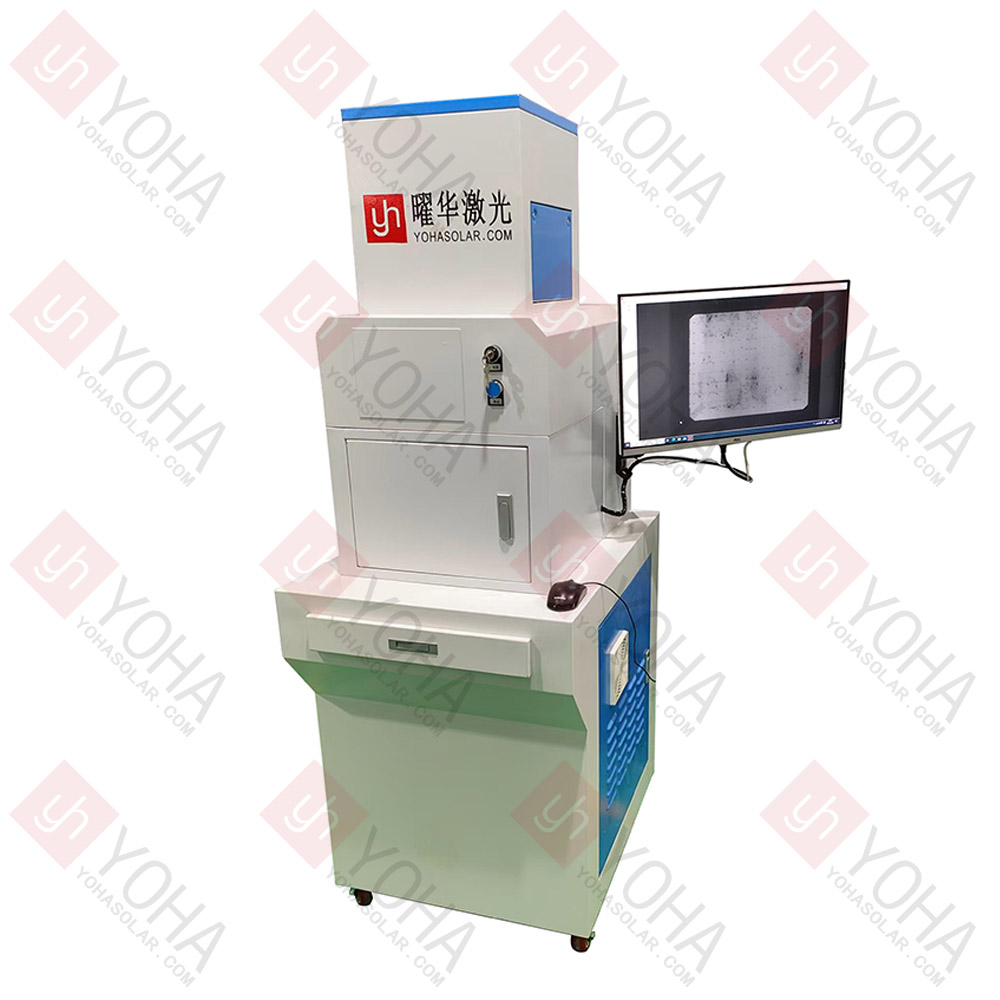Welcome to Wuhan Yoha Solar Technology Co., Ltd!
common problem
Site Map
Language:
 Chinese
Chinese
 English
English
Welcome to Wuhan Yoha Solar Technology Co., Ltd!
common problem
Site Map
Language:
 Chinese
Chinese
 English
English
The solar cell PL (Photoluminescence) tester is a key equipment that utilizes the photoluminescence principle for non-contact, non-destructive testing of solar cells. It rapidly identifies internal defects (such as micro-cracks, fragments, low-efficiency areas) and evaluates electrical performance parameters (e.g., minority carrier lifetime, efficiency distribution). Primarily used for production line quality control and process optimization.

Non-contact & Non-destructive Testing: Uses photoluminescence principle without touching the cell surface, completely avoiding physical damage or contamination to fragile cells, ensuring product integrity.
High-speed Scanning & Imaging: Completes full-cell scanning within seconds, generating high-resolution PL images, significantly improving production line efficiency and throughput.
High-precision Defect Visualization: Extremely sensitive to microscopic defects (e.g., micro-cracks, fragments, broken grids, contamination, process non-uniformity), clearly locating issues invisible to the naked eye.
Quantitative Electrical Performance Evaluation: Analyzes PL signal intensity to quantitatively assess key parameters like minority carrier lifetime distribution and efficiency uniformity, providing direct data for process optimization.
| Item | Specification |
|---|---|
| Model | YH-PL |
| Cell Compatibility | Monocrystalline/Polycrystalline, PERC, HJT, TOPCon, etc. |
| Camera Resolution | 5 Megapixels |
| Camera Type | Custom High-def Industrial Camera |
| Sensitivity | Detects cracks <0.03mm wide |
| Testing Orientation | Vertical Downward |
| Laser Power | 50W |
| Breakage Rate | ≤0.05% (Grade-A Cells) |
| Loading Method | Manual Loading |
| Effective Testing Area | 230*230mm |
| Functional Expansion | Optional EL/IV Testing Module |
Production Line Quality Screening: Core application for online/offline rapid defect detection (micro-cracks, fragments, contamination, process defects), enabling real-time sorting to improve yield and reduce breakage risks.
Process Optimization & Monitoring: Quantitative comparison of PL images/parameters across batches to identify process bottlenecks (texturing, diffusion, coating, firing), enhancing efficiency and uniformity.
R&D Validation for New Products: Non-destructive evaluation of novel cell structures (TOPCon, HJT, IBC) or materials through high-resolution performance mapping, accelerating development cycles.
Failure Analysis & Reliability Studies: Precise localization of microscopic defects or degradation areas in abnormal cells, facilitating root-cause analysis for improved long-term reliability.
1. Darkroom Environment: Testing requires complete darkness to avoid ambient light interference, ensuring image clarity (especially for micro-defects).
2. Calibration & Standardization: Regular light intensity/spectral calibration is essential. Different cell types require matched parameters (laser wavelength/power) to prevent misjudgment.
3. Surface Cleanliness: Fingerprints, oil, or dust on cells may block PL signals. Clean samples with lint-free gloves before testing to avoid false positives.
4. Avoid Over-excitation: Prolonged high-power laser exposure may cause thermal damage (especially for thin or PERC cells). Optimize intensity/scan speed by cell type.
5. Cross-validation with Electrical Tests: PL images reflect carrier recombination distribution. Critical conclusions (e.g., efficiency loss) require EL or IV test verification.
6. Safety & Maintenance:
Laser Safety: Wear protective goggles; avoid direct beam exposure.
Optical Maintenance: Regularly clean lenses/filters to prevent dust accumulation and signal degradation.
TOP
18086473422
MESSAGE
